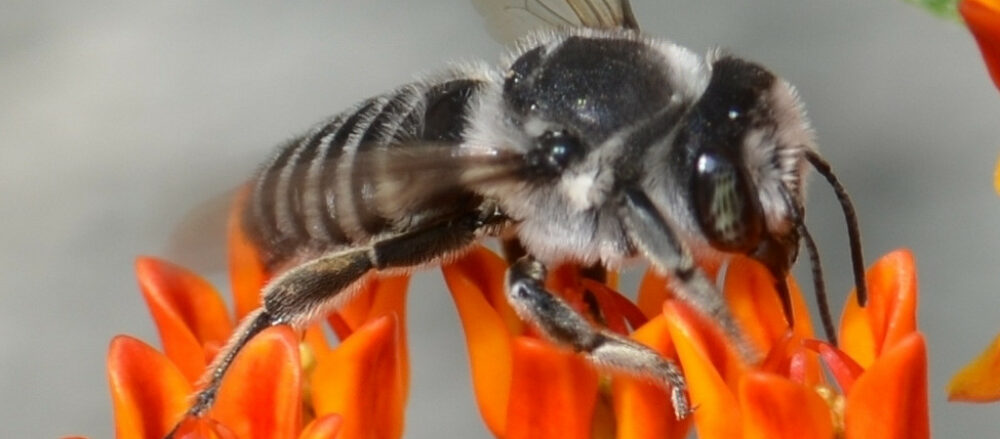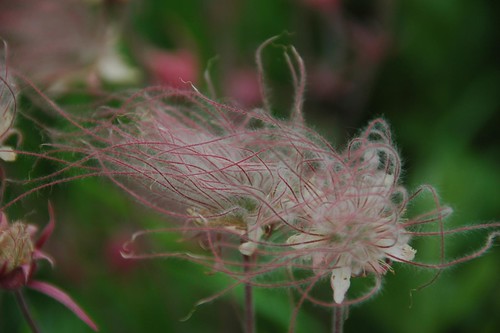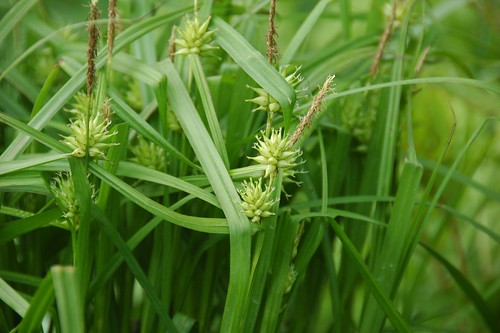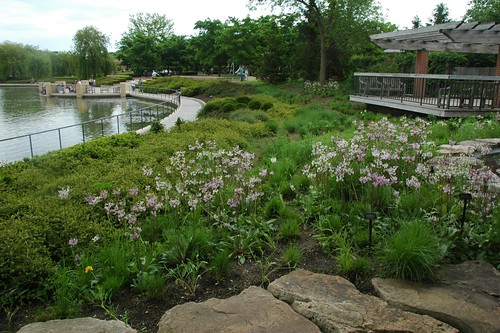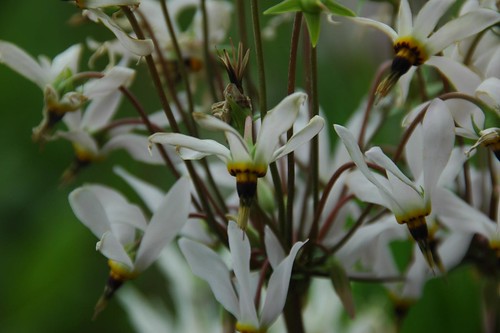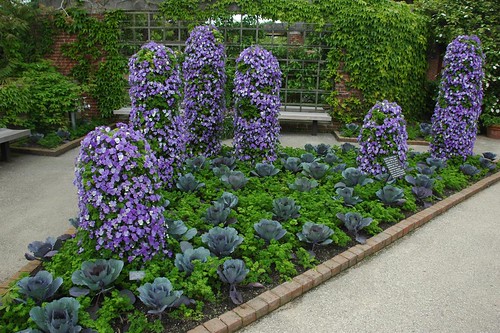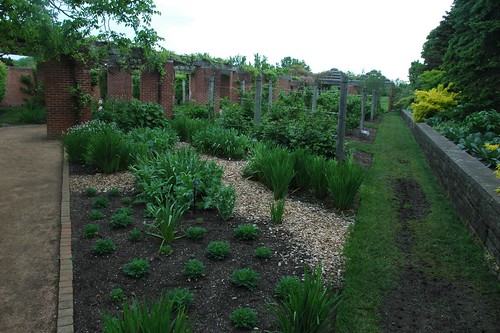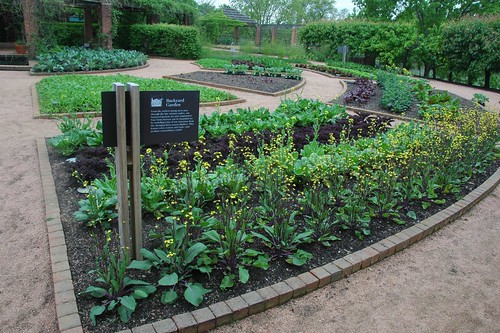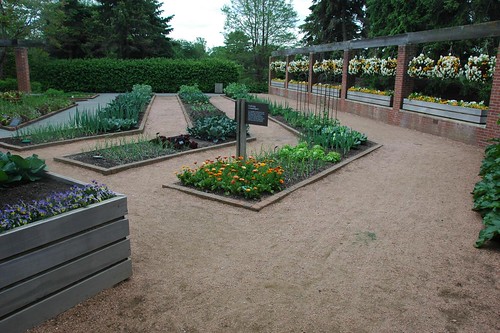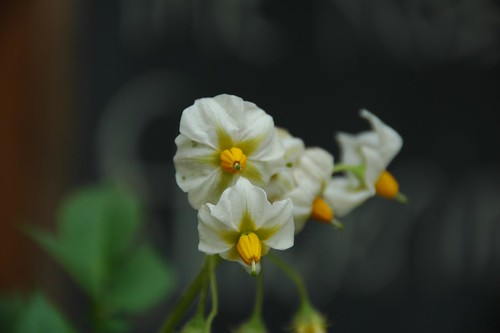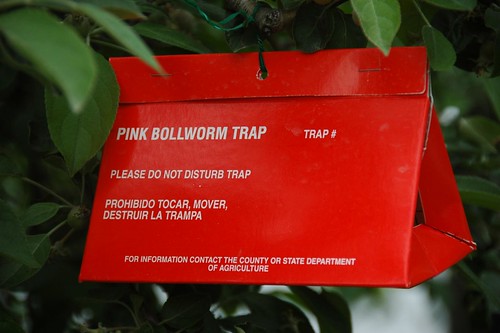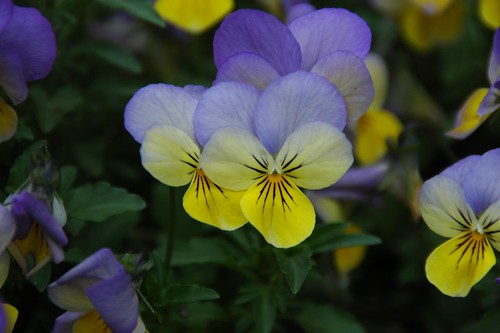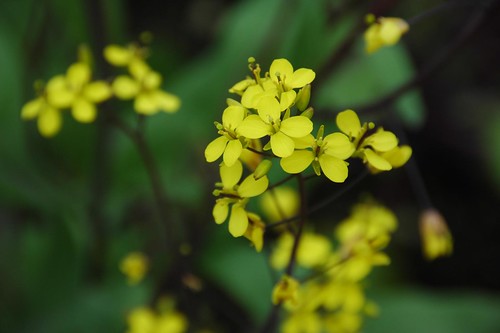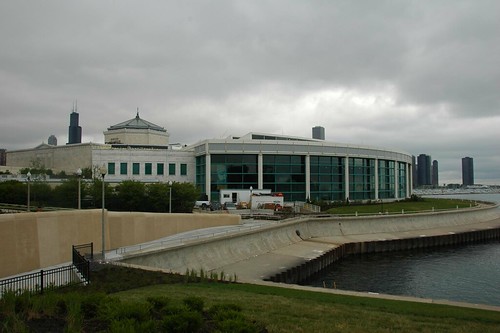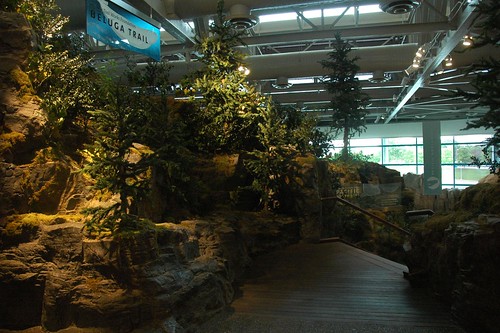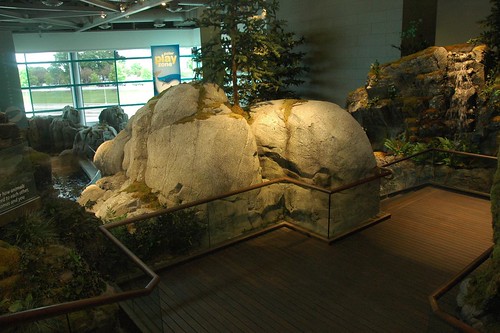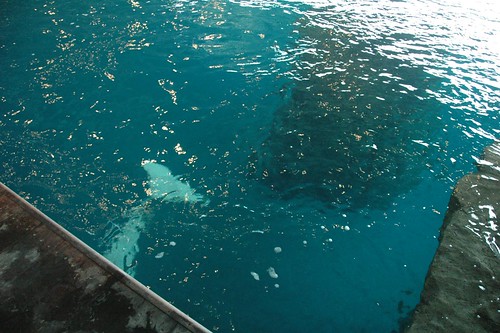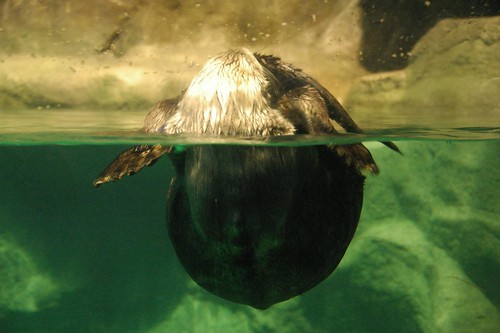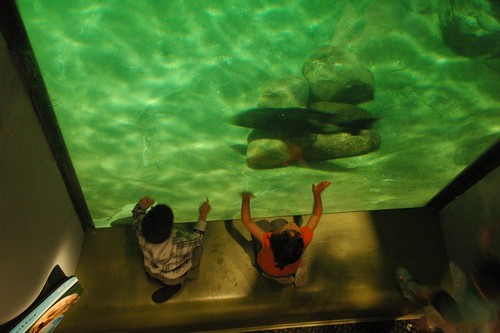At the Chicago Botanic Garden, our first garden stop for Chicago Spring Fling 2009, I made a pilgrimage to the Native Plant Garden. I was surprised that most of the plants were familiar to me as Northeastern natives. However, I had never before encountered Geum triflorum, Prairie Smoke. I saw a lot more of over that weekend, but I saw it here first.
Even close up, it reminds me of trails of smoke rising from a candle wick that’s just been extinguished. I bumped into the staff photographer who took the group shot of us just outside the visitor’s center. I asked her what she liked in this garden; she said this was one of her favorite flowers.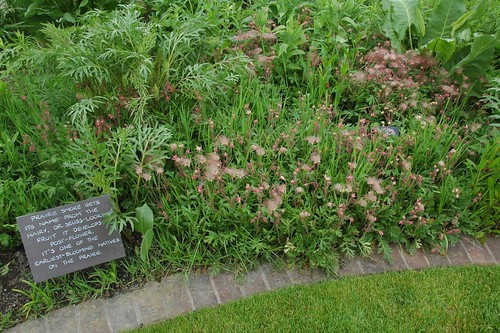
Most of the Baptisia were not yet fully open here as they were at the Lurie Garden we visited later in the day. They looked like grass eels rising from the lake bed.
On closer inspection they looked slightly less reptilian.
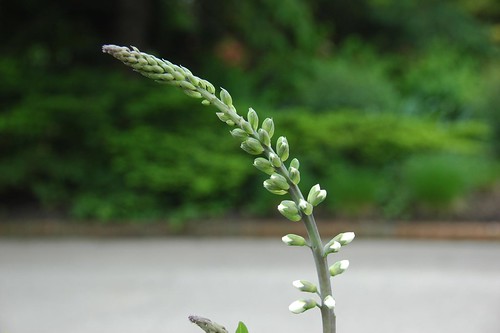
I did find one handsome stand of Baptisia australis.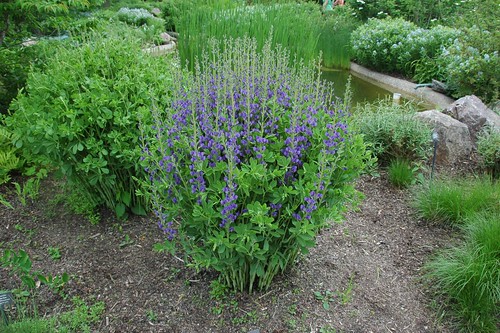
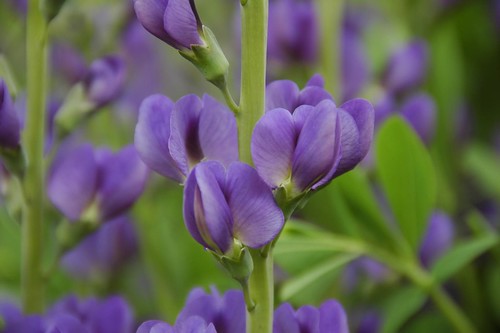
Another sinuous plant was this beautiful Carpinus caroliniana, Hornbeam. Another common name is Musclewood. It’s easy to see why.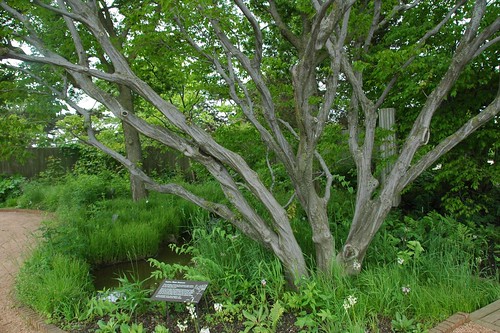

I find beauty in the green things, whose forms gain prominence.
Parthenocissus quinquefolia, Virginia Creeper
A grass I neglected to identify.
Aristolochia macrophylla, Dutchman’s Pipevine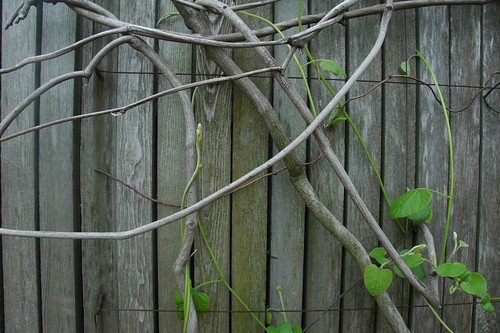
The big star when I visited was Dodecathon meadia, Eastern Shooting Star, an eastern woodland wildflower with which I am familiar. I grew it in Garden #1 in the East Village decades ago. During my Chicago visit, it appeared and reappeared in drifts, and in its full color range, from pristine white to pink to deep rose.
[bit.ly]
Related Content
Edible Gardens, Chicago Botanic Garden
Model Railroad Garden, Chicago Botanic Garden
Rick Bayless Garden
Alfred Caldwell Lily Pool
